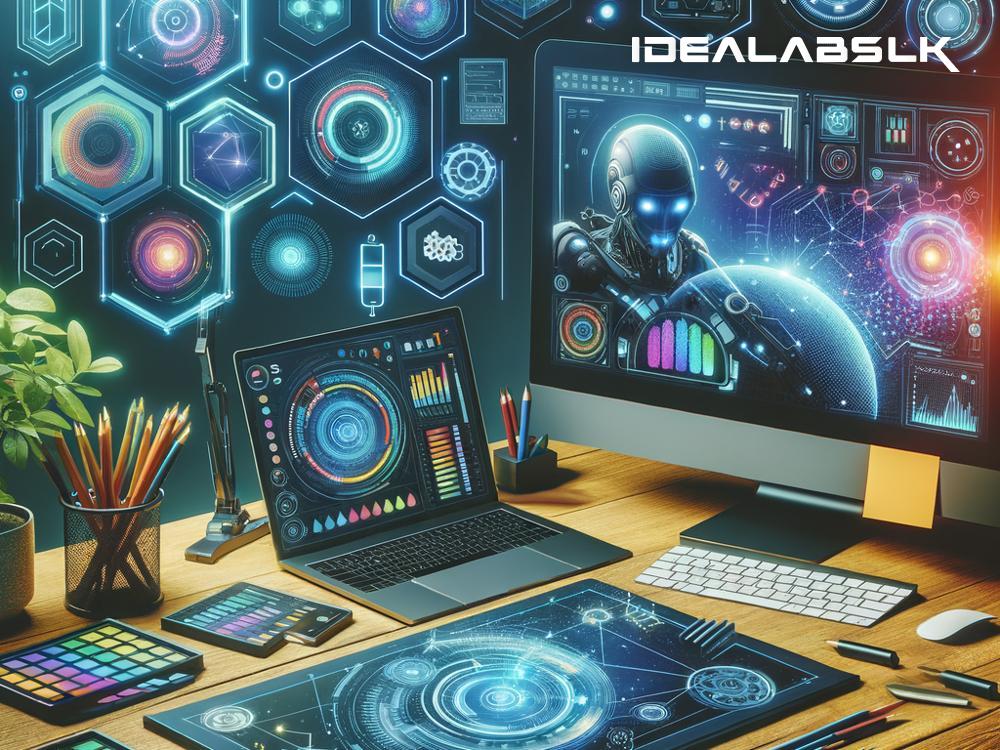The Future of Graphic Design in the Age of Artificial Intelligence
In recent years, the world has witnessed an immense technological leap, particularly in the realm of Artificial Intelligence (AI). This groundbreaking advancement is not just reshaping how we live and work but is also profoundly transforming the creative industries, including graphic design. As we stand at the cusp of this new era, it's an exciting time to ponder the future of graphic design in the age of AI. Will these smart machines replace human creativity, or will they unlock new horizons of innovation and creativity? Let's dive into this fascinating subject.
What Is AI Doing in Graphic Design?
AI in graphic design is like having a super-smart assistant who's learning and evolving every day. It can help designers by automating mundane tasks, generating innovative design options, and even predicting design trends. This isn't about replacing human designers but empowering them to focus more on creativity and innovation.
For instance, imagine you're working on a project with a tight deadline. An AI tool can quickly generate several design variations based on your initial idea, saving you time and providing fresh perspectives you might not have considered. Moreover, AI can handle tasks like resizing designs for different platforms, ensuring consistency and efficiency.
Enhancing Creativity and Productivity
One of the most exciting prospects of AI in graphic design is its potential to enhance human creativity. AI can sift through vast amounts of data, learn from it, and generate creative outputs that can inspire designers. This collaboration between human creativity and machine intelligence can lead to breakthroughs in design that were previously unimaginable.
Additionally, AI can significantly boost productivity in the design process. By automating repetitive tasks, designers can spend more time refining their ideas and exploring new concepts. This efficiency can be particularly beneficial for meeting tight deadlines and managing multiple projects.
Customization and Personalization at Scale
In today's world, the demand for personalized content is higher than ever. AI can analyze data to understand individual preferences and create customized designs on a massive scale. For brands, this means the ability to offer uniquely tailored content to their audience, enhancing engagement and customer satisfaction.
For graphic designers, this represents a shift in how designs are created. Instead of designing one-size-fits-all solutions, designers can leverage AI to create more personalized and impactful designs without compromising on efficiency.
AI as a Learning Tool
Another fascinating aspect of AI in graphic design is its role as a learning tool. AI algorithms can study and analyze the work of world-renowned designers, distilling insights and styles that can educate and inspire upcoming designers. This democratization of design knowledge can level the playing field, allowing more people to access high-quality design education and resources.
Challenges and Ethical Considerations
While the potential of AI in graphic design is undeniable, it also poses challenges and ethical considerations. For one, as AI becomes more integrated into the creative process, the line between human and machine-generated design may blur, raising questions about originality and copyright.
Furthermore, the reliance on AI could potentially homogenize design, as machines may gravitate towards patterns and designs that are proven to be effective, potentially stifling innovation. Therefore, it's crucial for designers to use AI as a tool for enhancement rather than a substitute for human creativity.
The Future Is Collaborative
The future of graphic design in the age of AI is not about machines vs. humans. Rather, it's about collaboration. AI is a powerful tool that, when used wisely, can unlock new levels of creativity and efficiency in graphic design. By combining human intuition and creativity with the analytical power of AI, the possibilities are limitless.
In conclusion, AI is set to revolutionize the graphic design industry by enhancing creativity, boosting productivity, enabling customization at scale, and serving as a powerful learning tool. However, it's essential to navigate this new landscape with awareness of its challenges and ethical implications. As we move forward, the synergy between human designers and AI will define the future of graphic design, leading to an era of unprecedented innovation and creativity.

